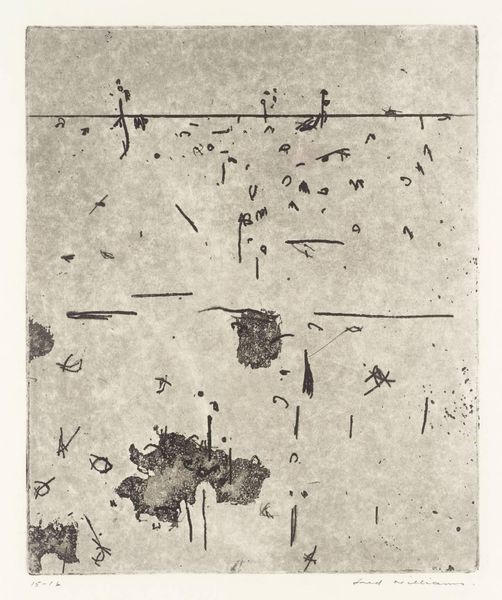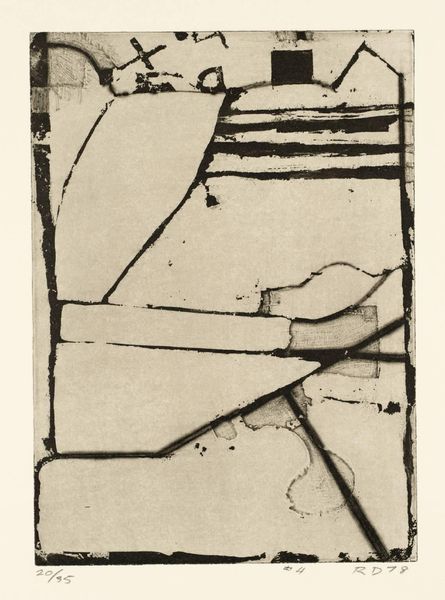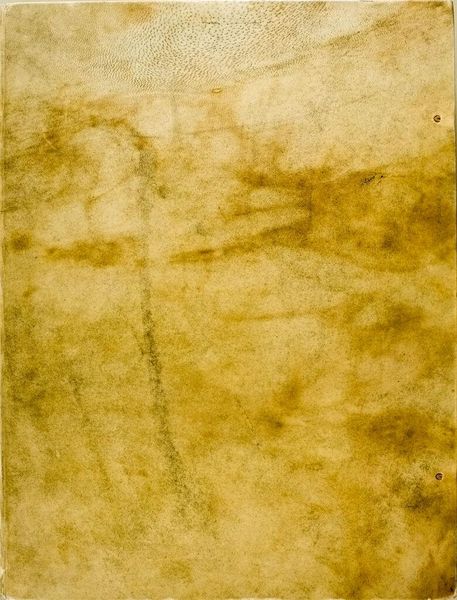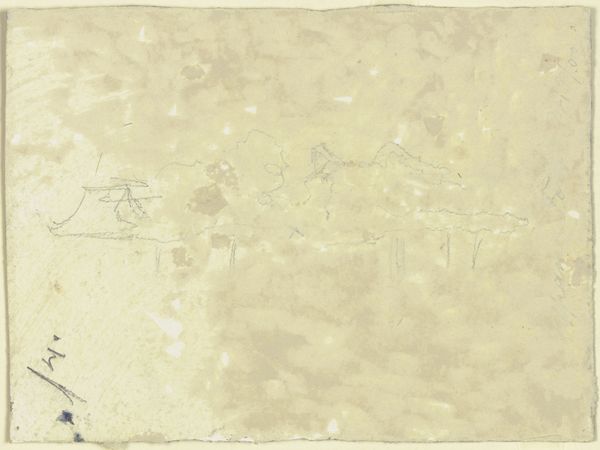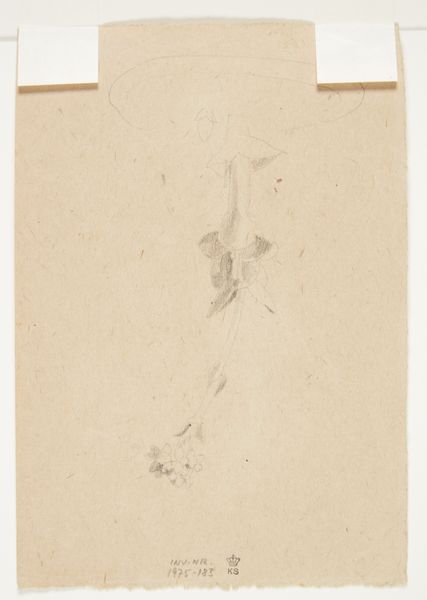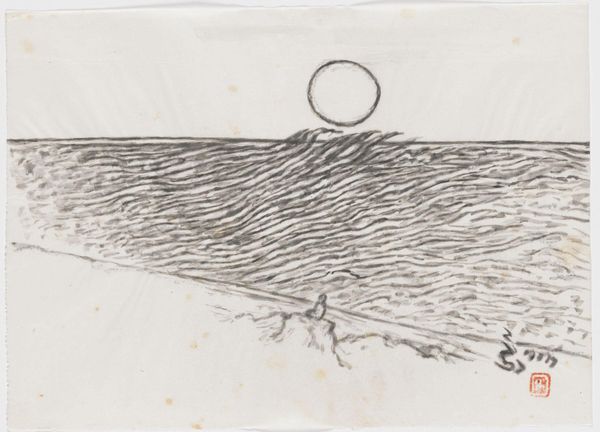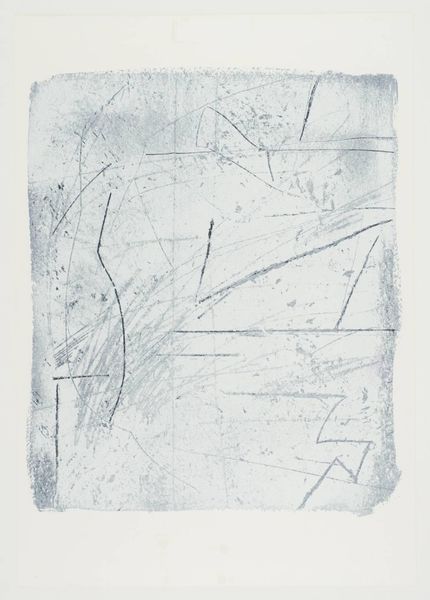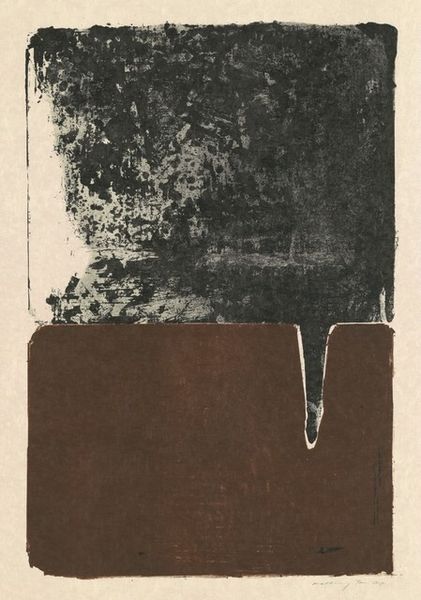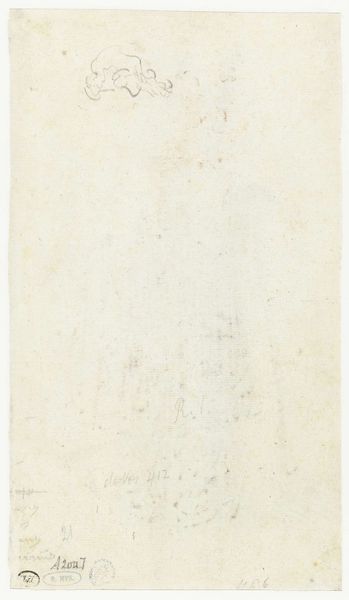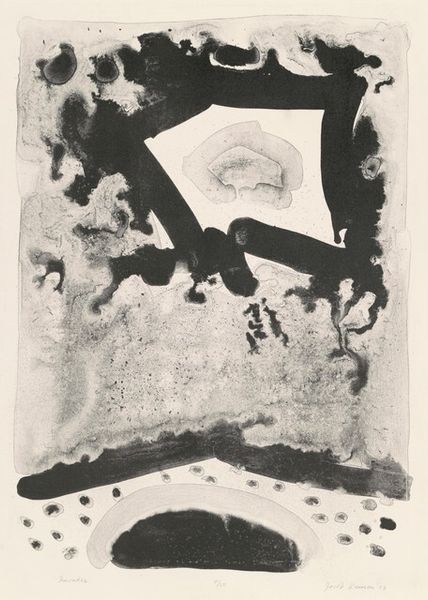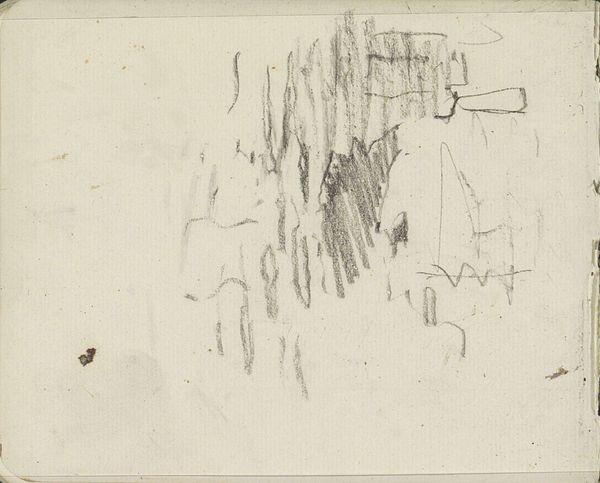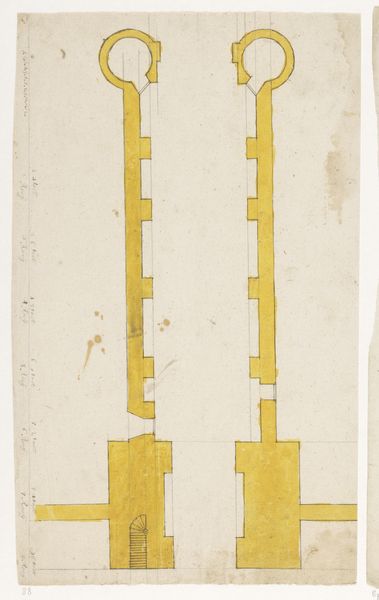
drawing, paper, ink
#
drawing
#
contemporary
#
blue ink drawing
#
fluxus
#
paper
#
ink
#
neo-dada
#
abstraction
#
line
Copyright: Alison Knowles,Fair Use
Curator: Alison Knowles’ piece, “Time Samples,” drawn with ink on paper, offers an interesting visual puzzle. What is your immediate response? Editor: My eye is drawn to the paper itself. Its rough texture and those dispersed marks give it a really tactile, almost weathered feeling, as if the surface itself has recorded the passage of time, visually connecting the drawing’s subject to its making. Curator: Indeed, Knowles, associated with Fluxus, always had a keen interest in materials. Looking closely, you can see the ink isn’t uniformly applied. How does this materiality play into Knowles’ engagement with contemporary artistic discourse? Editor: It’s compelling when we situate it historically, particularly Knowles' position as a woman artist exploring boundaries between performance, music, and visual art. Her deliberate use of readily available paper and ink aligns with a Fluxus ethos, challenging established systems within the art world. She’s asking questions about access, about whose labor counts, whose is valued. Curator: And the drawing’s subject, those abstracted lines—are we looking at musical notations, structural renderings? The open nature invites diverse interpretations, pushing beyond conventional artistic forms. Editor: For me, the suggestive ambiguity strengthens the socio-political element, resisting any didactic meaning. Perhaps the scattered marks represent the fleeting nature of a time sample or of life itself. How it circulates is much more interesting. Curator: Knowles was really interested in exploring process, wasn’t she? Editor: Absolutely, especially her investigations with language, time and the everyday. Thinking about how the artwork is archived, where it's shown—all of that matters in shaping its legacy and interpretation. Curator: Examining its place, in terms of process and access, in an era so concerned with artistic legacy is important. The materiality here reminds us to look beyond aesthetics. Editor: Ultimately, this piece provokes us to think more about who determines artistic value.
Comments
No comments
Be the first to comment and join the conversation on the ultimate creative platform.
